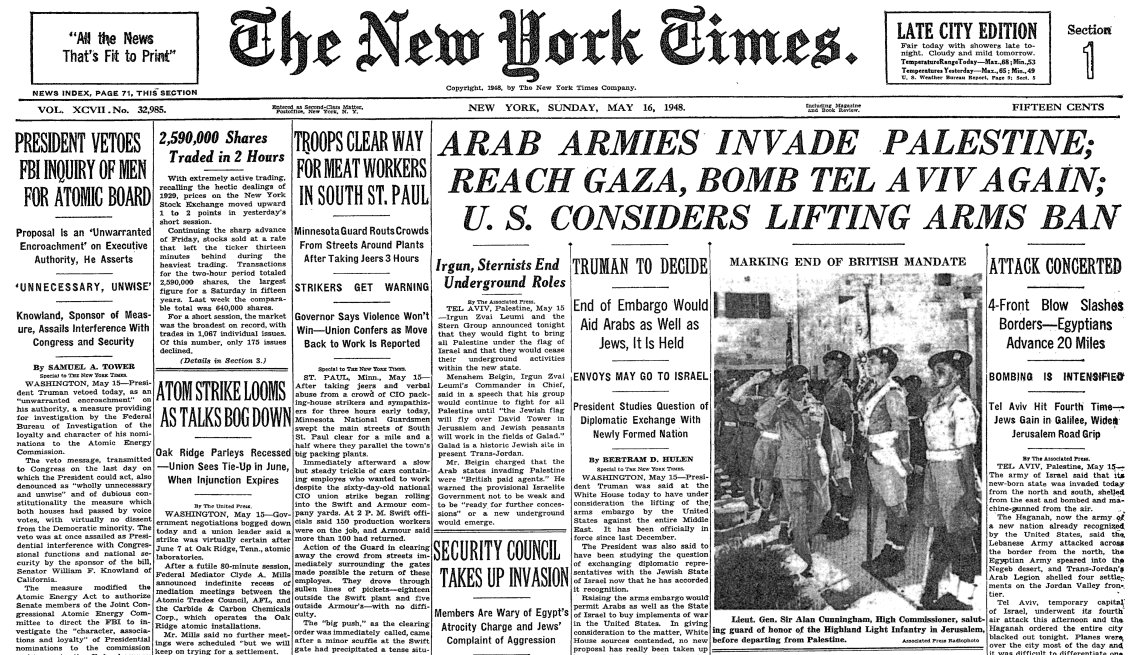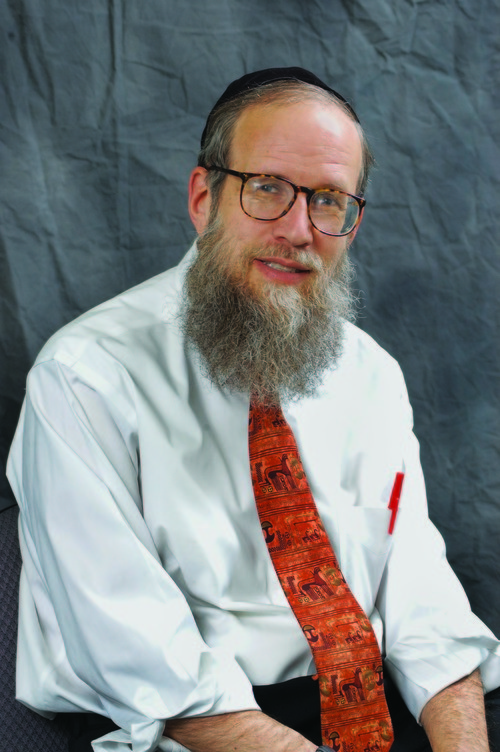
We know that 67 Jews were axed and otherwise done to death in cold blood — more accurately, that they were slaughtered, brutalized in ways that surviving eyewitnesses found too gruesome to spell out.
We know that prior this pogrom, relations between the Jews and the Arabs in Hebron seemed to be quite congenial — for generations.
We know, for example, that relations between the yeshiva students who came to Hebron from Lithuania in 1924 and the local Arabs were particularly friendly. As far as yeshivas go, the Hebron yeshiva was relatively well endowed, and this helped the economy of the local Arab population. So did the 28 American students who joined the yeshiva. Typically, they had more spending money than the Israeli students.
We know that these two realities — pogrom vs. friendly relations — call into question the value and reliabity of good relations between Jews and Arabs. How could Jews and Arabs live together in peace in Hebron for decades, but at the drop of a hat, Arabs turn on Jews and murder them? Yet, this was the reality.
Take the case of Râ Noah Immerman and Issa. Immerman was a kosher baker in Hebron. He had an Arab assistant named Issa. As one memoirist of the pogrom, Dov Cohen, put it, "Issa was so involved in the business that he spoke Yiddish fluently. Until the riots, it seemed as though Issa was the nicest Arab around. When the riots began, though, Issa was a prominent player. He murdered his employer — but that wasnât enough for him. He then cruelly burnt Râ Noahâs head.â
Other horror stories abound. Three generations were cut down in a single day: Aryeh Leib Buttelevsky, his son-in-law Bezalel Lazarovsky, Bezalelâs brother Israel Lazarovsky, and Bezalelâs daughter, Deborah. This family was not the only case of multi-generational Jewish victims of the Arab pogromists on Shabbos, Aug. 17, 1929.
How did anyone survive the Hebron pogrom? Hundreds, if not thousands, of Arabs converged on the city from its surrounding villages, bent on slaughter, and incited the Arab residents of Hebron to do the same.
Here is how our memoirist, an American teenager who joined the yeshiva from Seattle, Dov Cohen, recounts his own survival amidst the mass murder:
Cohen heard the blows of the Arab pogromists against the door of the home in which he was staying. Cohen estimated their number at 100. Somehow, with superhuman strength, Cohen hoisted a heavy bed on his back and placed it in the space between the front door and the inner steps leading up to the second floor, where he and his friends were hiding. The bed fit perfectly.
The murderers could not open the door.
However, they wouldnât give up. "They wouldnât let their prey escape!â as Cohen wrote in his memoir. The murderers headed to the house next door with the idea of climbing up to the roof, then jumping onto Cohenâs roof and entering the house from there. Cohen knew this because he heard the conversation between the rioters, standing outside the house next door, and the Arab landlord inside.
Quick witted, Cohen himself jumped from his roof onto the Arab landlordâs roof and begged him not to let the murderers into his house.
The Arab landlord agreed. As Cohen later wrote: "He was a kind, good-hearted man. He brandished his hatchet threateningly and shouted through the window, âIf anyone dares enter my house, I will smash his skull with this hatchet!ââ
The landlordâs children did not agree with their father and yelled outside to the rioters that a Jew was in the house, so the rioters brought their hatchets down hard on the door. But again the landlord told Cohen he would protect him.
Cohen was terrified nonetheless. The landlord told him to look for a hiding place in his house. He found a good one, a cellar covered over by boards. Meanwhile, Cohenâs friends also jumped across the roof to the Arab landlordâs house looking for him and they, too, ended up hiding in this cellar. It was a long, underground pit that ran all the way underneath the street. They heard the sounds of the crazed mob on top of them, as well as ear-splitting shrieks and screams of Jews being hacked to death.
They were not discovered.
The Arab landlord had saved them.
He was a righteous gentile.
Sometime later, two rabbis of Hebron, also survivors, compiled a list of all the Arabs who had protected Jews. There were 19 Arabs on the list.
There you have it: Arab hatchet murderers; Arab employees who turned on their long time employers or neighbors; Arabs who murdered for no reason; Arab leaders in Hebron who were tipped off in advance of the Shabbos pogrom, yet assured Jewish leaders who had gotten wind of something that they had nothing to worry about. The friendly relations between Arabs and Jews in Hebron convinced the Jewish leaders not to be afraid. They were lied to, duped, so they didnât escape to Jerusalem when they could have.
All this, on the one hand.
Then, on the other hand, 19 Arabs who risked their lives to save Jews against the rage of their ethnic brothers.
Nineteen Arab righteous gentiles.
How do we stack up this double extremism? Extreme evil. Extreme humanity.
I donât know.
(COMMENT, BELOW)
Rabbi Hillel Goldberg is editor and publisher of Intermountain Jewish News, where this first appeared, and his column in the IJN is the longest-running weekly column in Jewish journalism. He has won more Rockower Awards for excellence in Jewish journalism than any other person. His doctoral thesis on Rabbi Salanter, Israel Salanter: Text, Structure, Idea (Ktav, 1982) was awarded the Academic Book of the Year by Choice. His most recent book is Across the Expanse of Jewish Thought: From Holocaust to Halakha and Beyond (Ktav, 2022).


 Contact The Editor
Contact The Editor
 Articles By This Author
Articles By This Author